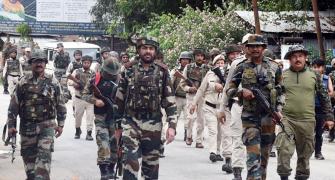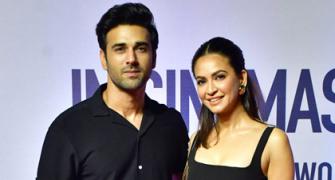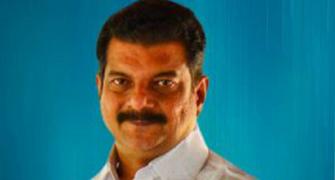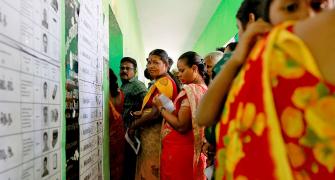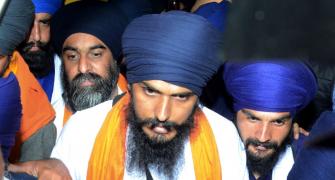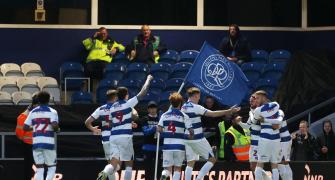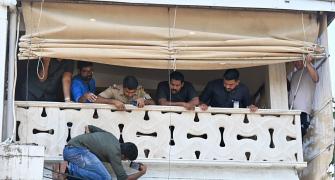The US Open begins on Monday. With Nadal out, the big battle this time is between Federer, Djokovic and Murray. A Seshan rates the chances of the tennis giants.
The Grand Slam season of 2012 in tennis comes to a close with the commencement of the US Open on August 27 at Flushing Meadows in New York. Grand Slam events attained worldwide popularity after they were thrown open to professionals in 1968. Till then only Wimbledon attracted attention in India with players from the country participating to a larger extent than in the other three majors -- the Australian, the French and the US Opens.
The US Open is played on hard courts ('DecoTurf') comprising layers of acrylic, rubber and other materials on top of an asphalt or concrete base. They can vary in speed, although they are faster than clay but not as fast as grass courts. Tennis balls slow down lesser upon impact with DecoTurf and bounce slightly lower. While the ball rises to the shoulder level on clay and to the waist on grass, it is somewhere in between on hard courts. Unlike in Wimbledon, they allow sliding like in Roland Garros.
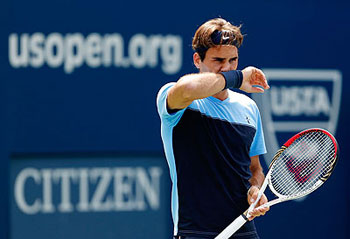 The court enables long rallies. According to my notes, the longest rally was of 37 shots in a second round match between Juan Carlos Ferrero and Gael Monfils a few years ago. Heavy rains cause water to bubble up through the court surface. I remember seeing on TV ball boys mopping up water from the court surface using clothes -- a third-world technology in the first world! Obviously heavy mechanical dryers would damage the surface. Compare this with how Wimbledon copes with the rains year after year. It takes just 30 seconds for 17 people to cover a court there.
The court enables long rallies. According to my notes, the longest rally was of 37 shots in a second round match between Juan Carlos Ferrero and Gael Monfils a few years ago. Heavy rains cause water to bubble up through the court surface. I remember seeing on TV ball boys mopping up water from the court surface using clothes -- a third-world technology in the first world! Obviously heavy mechanical dryers would damage the surface. Compare this with how Wimbledon copes with the rains year after year. It takes just 30 seconds for 17 people to cover a court there.
The Open has many firsts to its credit: the first to introduce the tiebreak system in 1970 differing from the other three majors in that there are final-set tiebreaks and the first to agree to pay equal money to men and women players. To meet the needs of television, two men's semi-finals and the women's final take place on the second Saturday of the fortnight called 'Super Saturday'. As if this is not heavy enough, occasionally a double's final is also thrown in!
It has the longest daily matches among the Grand Slam events. Matches start at 10 am and could go well beyond midnight. Given the time difference, Indian TV audience can see the matches during the night. The matches on September 9, 2009 started at 8.30 pm (IST) and went on till 9.45 am the next day with a 15-minute break on Ten Sports!
This writer has spent some sleepless nights watching TV but he has no regrets! Evening sessions start as late as 7.30 pm and matches are played under floodlights. This is due to the demands of the sponsors and television companies to facilitate prime-time viewing by the public. Bjorn Borg could never win the title because he was not comfortable with floodlights, although he reached the finals four times. In 2006, the US Open became the first Grand Slam to implement the challenge system incorporating the instant replay of calls to settle disputes.
The last two-and-a-half years have seen the Quartet -- Roger Federer, Rafael Nadal, Novak Djokovic and Andy Murray -- dominate the tennis scene; they all reached the semi-finals of the Grand Slams with the exception of Nadal faltering at Wimbledon this year. Nadal's withdrawal from US Open reduces the Quartet to a Troika. Each Grand Slam this year saw a different champion -- Djokovic in Melbourne, Nadal in Paris and Federer in Wimbledon. Would it be Murray this time in New York?
The transition from the fast grass courts of Wimbledon to the hard courts of USA is less difficult vis-à-vis that from the clay courts of the French Open to Wimbledon. This is seen from the fact that those who won Wimbledon and the US Open back to back numbered 15 over 18 years compared to six players in nine years in the case of the other. The last to achieve the Wimbledon-US Open combo was Federer in 2005. Can Federer repeat his feat?
There is no doubt about the resurgence of Federer after his Wimbledon victory this year. Although he lost at the Olympics in the final, Murray had to really fight his way through to claim the gold. Between the Olympics and the US Open there were four ATP championships on hard courts at Washington DC, Toronto, Cincinnati and Winston-Salem. Of them only the Cincinnati championship played on DecoTurf is a good pointer to the possible champion in Flushing Meadows since all the top players participated in it. Murray withdrew from the Rogers Cup in Toronto due to injury, while Federer did not play there. There Djokovic won defeating Richard Gasquet. At Cincinnati Federer and Djokovic met in the final and the former won 6-0, 7-6 (7). Murray had been defeated in the third round by Jeremy Chardy (6-4,6-4), a Belgian ranked 33 by the ATP. Looking at Murray's post-Olympic performance and the recurrence of the problem of injury, it looks like the final will be between Federer and Djokovic, the defending champion, who won over Nadal in a classic match last year, with the odds tilted in favour of the former. However, a Jo-Wilfred Tsonga or a David Ferrer or a Tomas Berdych could upset the apple-cart. Federer, Djokovic, Murray and Ferrer are the first four seeds. It is likely that Federer will meet Murray in the semifinals.
On the women's' side, the Cincinnati tournament saw Li Na capturing the title defeating Angelique Kerber 1-6, 6-3,6-1. Serena Williams had lost to Kerber in straight sets (6-4,6-4) in the quarters. Venus Williams has been below par in most of the WTA and Grand Slam matches. I would draw the short list for the semifinals with the players coming from Serena, Li Na, Victoria Azarenka, Maria Sharapova, Agnieszka Radwanska, Petra Kvitova, Kerber or Samantha Stosur, the defending champion who defeated Serena last year. Kim Clijsters will be saying goodbye after a remarkable career that has seen her win two titles at US Open in 2009 and 2010 as a mother after retiring and returning to the game. There is no doubt that she, who never threw tantrums on court, will be the favourite. But with frequent injuries and the admission of her inability to cope with the physical demands of the game, she is not likely to repeat her title-winning performance in New York.
Ramesh Krishnan (1981, 1987) and Vijay Amritraj (1973, 1974 and 1981) reached quarter-finals, Leander Paes the third round (1997) and Sania Mirza the fourth round (2005), the third round (2007) and the second round (2009) and Somdev Devvarman the second round (2009) in the Open. Either by themselves or in partnership with other nationals, Indians have had good performances in the doubles championships. Paes and Bhupathi were finalists (1999) as also Paes and Riki (2004). Bhupathi and Mirnyi (2002), Paes/Damm (2006) and Paes/Dlouhy (2009) won the title. Bopanna was a finalist with Qureshi in 2010. Bhupathi/Mirza ((2007) and Mirza/Mettek (2007) reached the quarterfinals of the mixed doubles and women's doubles, respectively. The Indians are likely to do well only in doubles events.
Photograph: Chris Trotman/Getty Images


